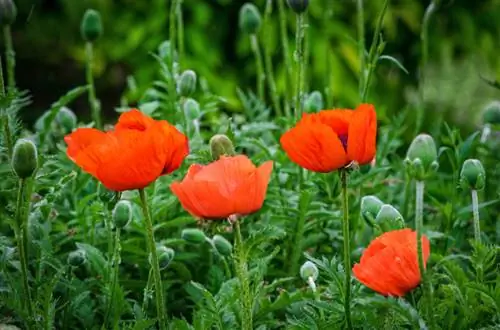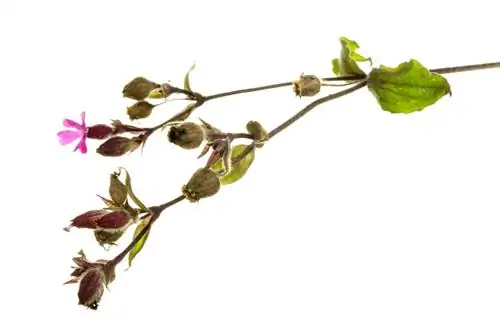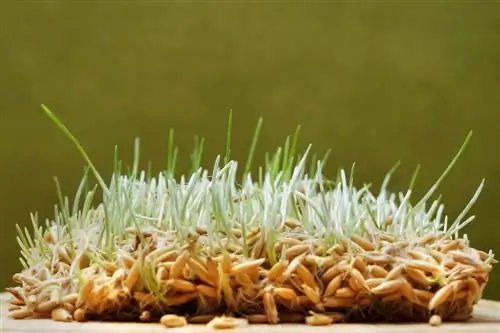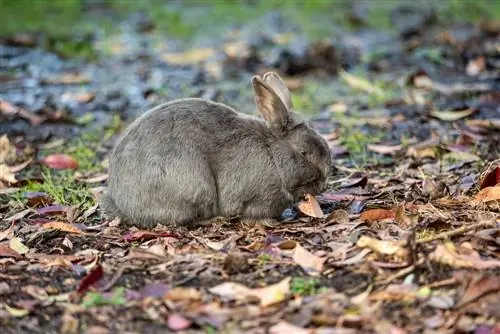- Author admin [email protected].
- Public 2023-12-16 16:46.
- Last modified 2025-01-23 11:20.
The corn poppy is usually only noticed when its bright red flowers appear at the edge of the field or in the garden. But the wild poppy can also be easily recognized by its growth habit and characteristic leaves.
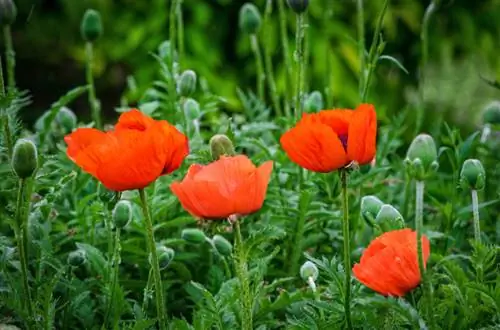
What do poppy leaves look like and can you eat them?
Common poppy leaves are bristly hairy, lanceolate in shape and measure about 15 cm. They are edible, but not in large quantities as they can be slightly toxic and cause nausea or fatigue. Young leaves taste similar to cucumber and can be used in salads.
What do the leaves of the corn poppy look like?
The leaves of the corn poppy are bristly, hairy and rough, as are the stems of this plant. They are single to double pinnate and are about 15 cm long. The leaf sections are sharply serrated or roughly cut, the shape is lanceolate.
Are the leaves of the corn poppy edible?
In not too large quantities, corn poppy leaves are certainly edible. Use especially the young leaves before the flowering period begins. You can use it to cook a vegetable similar to spinach. To refine the taste, we recommend sautéed shallots and a little cream.
When raw, the leaves of the corn poppy taste similar to cucumbers with a hint of hazelnut. They are suitable for preparing a wild herb salad or for refining green salads.
What happens when you eat large quantities of corn poppy leaves?
Like the other parts of the plant, the leaves of the corn poppy are slightly poisonous in large quantities. They contain various alkaloids, tannins and mucilage. The largest proportions of toxins are found in the milk-like plant sap. If consumed in large quantities, this can lead to nausea, vomiting, stomach pain, restlessness and fatigue. You should keep grazing animals, such as horses, cows or sheep, away from corn poppies.
The most important thing about the corn poppy leaves:
- bristly hairy and rough
- lanceolate shape
- single to double feathered
- about 15 cm long
- divided into either sharply sawn or roughly cut sections
- young leaves edible (before flowering)
- taste similar to cucumber, towards hazelnut
- large quantities slightly toxic
Tips & Tricks
Use the fresh young leaves for a wild herb salad or as a seasoning for a green salad and be surprised by the taste of cucumber and hazelnut.

